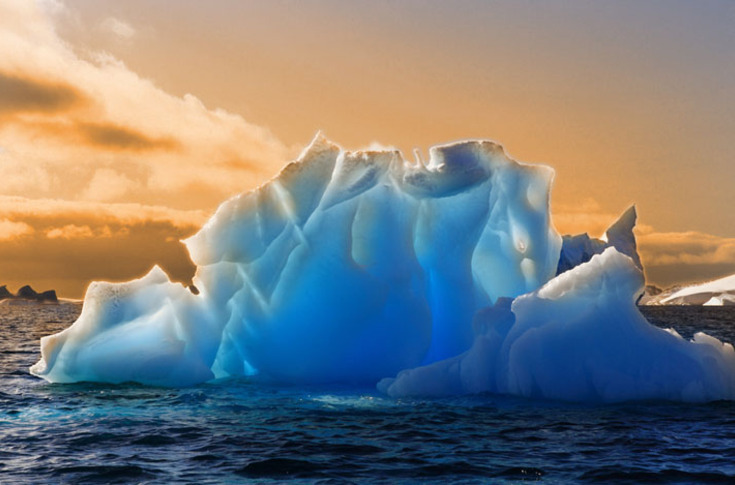
Climate Forcings, Feedback and the Cryosphere
The sensitivity of Earth's climate system to natural and anthropogenic forcings is strongly tied to the response of the cryosphere, including the responses of snow cover and the albedo of snow. Recent modeling suggests that the regional to global radiative forcings by mineral dust, brown carbon, and black carbon in snow and ice have been underestimated, or worse, largely unrealized (Hansen and Nazarenko 2004; Painter et al. 2007; Flanner et al. 2007, 2009; Ramanathan et al 2008). However, these studies have been based on sparse measurements of short duration and limited spatial extent.
The Center for Climate Sciences at the Jet Propulsion Laboratory is promoting research to assess the influence of these changes on snow covered areas, surface temperatures, and the temporal structure of the North American Monsoon in the western United States. The research will be using satellite observations from imaging spectrometer data such as AVIRIS and ARTEMIS to validate retrievals of impurity radiative forcing in snow and ice. This effort is in preparation and support of the Decadal Survey mission, HyspIRI.
Ice Sheet Dynamics
Projecting sea level rise in the near future, at the decadal to centennial level, is a priority goal for the next Inter Governmental Panel on Climate Change assessment report (IPCC AR5). The Center for Climate Sciences is working to address two of the main challenges involved in attaining this goal: constraining of ice sheet models, and coupling with ocean circulation models.
Current ice sheet models rely on a combination of paleo-climate data and present-day surface and thickness data to constrain long transients from the last interglacial period until present time. However this approach relies on sparse temporal data and incomplete surface and thickness datasets. Furthermore, datasets used to spin-up ice sheet models are usually incompatible with the mass balance equations, and need to be relaxed for decades to account for mass-conserving ice flow.
Improving Ice Sheet Models
The Center is working to support research that involves the assimilation of NASA's IceBridge mission data and NASA's funded research in ice motion with satellite radar interferometry using a JPL/UC-Irivine-developed Ice Sheet System Model (ISSM), which will allow for better constraints on ice rheology and basal sliding, the production of more realistic model simulations, shorter spin-ups of transient flow runs, and overall improvements of numerical models of ice sheet evolution.
Transient flow models will be coupled with realistic simulations or reconstructions of ocean circulation that describe the exchange of heat, freshwater fluxes and salt between land ice, sea ice and the ocean. These processes control the stability of the periphery of ice sheets and are incompletely represented in existing models.
An Ocean-ice Assimilation System
Research supported by the Center will develop a coupled ocean-ice assimilation system capable of modeling circulation under ice shelf cavities, at resolutions relevant to ice sheet modeling (2 km at the ice front). The Center will also work to improve on current ISSM hydrological capabilities to provide realistic fresh-water inputs to the ocean. The scientific goal is to be able to carry out transient runs of the ice/ocean system in order to study feedback mechanisms between the two components, as well as the reaction of the ice sheet to decadal variability of the ocean.


